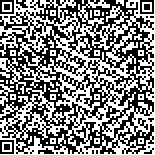| 摘要: |
| 马尼拉俯冲带潜在地震海啸对我国南部沿海城市构成巨大威胁,利用情景式数值模拟技术重构灾害过程并评估危险等级有助于理解南海海啸传播规律并指导预警预报和防灾减灾工作。根据美国太平洋海洋环境研究中心(Pacific Marine Environmental Laboratory,PMEL)发布的马尼拉俯冲带断层参数设计Mw 7.5、Mw 8.1和Mw 8.5三个震级下共19个震源,应用非静压海啸数值模型(Non-hydrostatic Evolution of Ocean WAVE,NEOWAVE)模拟各震源激发海啸在南海海盆的传播过程,通过最大波辐和测点时间序列发现海啸波能量传输分布并评估代表区域危险等级。研究表明,Mw 7.5级地震海啸对我国南部沿海的影响较低,波幅一般不超过30 cm;Mw 8.1级地震海啸对华南沿海主要造成太平洋海啸预警中心定义的II或III级海啸危险等级,海啸影响范围和能量分布特征由震源位置决定;Mw 8.5级地震海啸主要对中国沿海构成III级以上海啸威胁,不同位置震源的影响均不可忽视。受南海北部陆架、陆坡、岛链、海山等地形特征影响,源自马尼拉地震带的海啸波在传播入陆架浅水区域后,主导能量呈现始于陆架坡折处的带状分布,这直接导致我国汕头南澳、大亚湾、澳门、阳江、湛江、葫芦港等沿海区域受海啸影响显著;同时分布于南海深水区的东沙、西沙、南沙群岛等诸岛屿会受到相较于大陆沿海更为严重的海啸侵袭。 |
| 关键词: 马尼拉俯冲带 NEOWAVE模型 地震海啸 数值模拟 华南沿海 |
| DOI:10.11693/hyhz20220700181 |
| 分类号:P317.9 |
| 基金项目:海南省财政科技计划资助的海南省重大科技计划项目,ZDKJ202019号。 |
附件 |
|
| EFFECTS OF POTENTIAL SEISMIC TSUNAMIS IN THE MANILA SUBDUCTION ZONE ONTO COASTAL CITIES IN SOUTH CHINA |
|
LIU Ying-Nan1,2, WEI Xiao-Ran1, ZHI Hong-Huan1, LIU Jin-Wei1, LI Pei-Liang1,2, BAI Ye-Fei1,2
|
|
1.Ocean College, Zhejiang University, Zhoushan 316021, China;2.Hainan Institute of Zhejiang University, Zhejiang University, Sanya 572025, China
|
| Abstract: |
| Potential earthquake and tsunami in the Manila subduction zone pose a great threat to the coastal cities of South China. Using scenario-type numerical simulation technology, we reconstructed the disaster process and evaluated the risk level to understand the law of tsunami propagation in the South China Sea and guide the works of early warning, prediction, and disaster prevention and mitigation. Nineteen seismic sources in Mw7.5, Mw 8.1, and Mw 8.5 magnitude were designed and simulated in scenario according to the parameters of fault plate in the Manila subduction zone published by the Pacific Marine Environmental Research Center (PMEL) of the United States. The non-static tsunami numerical model NEOWAVE(Non-hydrostatic Evolution of Ocean WAVE) was used to simulate the propagation process of the tsunami triggered by each source in the South China Sea basin. Based on the maximum wave displacement and time series of measured points, the energy transmission distribution of tsunami wave was determined and the hazard level of representative region was evaluated. Results show that the Mw 7.5 earthquake tsunami would have a low impact on the coastal areas of South China, and the surface elevation would be generally less than 30 cm. Mw 8.1 earthquake tsunami could cause level II or III threat to the coastal areas.Mw 8.5 earthquake tsunami may pose a threat of level III disaster or above to the coastal areas. Thus, the potential impact cannot be ignored. Affected by the topographic features of the shelf, slope, island chain, and seamount in the northern South China Sea, the dominant energy of the tsunami waves originated in the Manila seismic zone shows a zonal distribution from the slope break of the shelf seaward after propagating into the shallow water area of the shelf. As a result, specific coastal areas including Shantou Nanao, Daya Bay, Macau, Yangjiang, Zhanjiang, Hulugang and other coastal oreas would be affected by tsunami. At the same time, the Dongsha, Xisha, and Nansha Islands in the deep waters of the South China Sea are more vulnerable to tsunamis than the mainland parts. |
| Key words: Manila subduction zone NEOWAVE model earthquake tsunami numerical simulation South China coastal |
